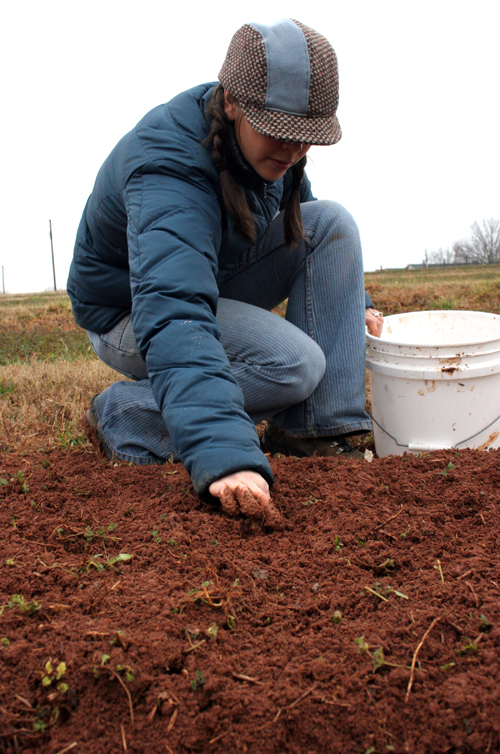Humid weather, high rainfall and nutrient-deficient soils are just a few of the challenges you might face as a gardener new to Georgia. But University of Georgia Cooperative Extension specialists and agents agree there are also upsides to gardening in the Peach State.
If you recently moved to Georgia and want to start a garden, you need to forget everything you know about gardening, says Extension horticulturist Paul Thomas. No longer can you stick a plant in the ground and expect it to grow.
Clay and sand
The most noticeable difference between Georgia and other states is the soil. The red Piedmont clay is hard to miss, especially if you live in north Georgia. In a rainy winter, it holds too much water, which can suffocate plants. In the summer it will become rock hard if it’s not amended.
The sandy Coastal Plains soil of the South is fairly reasonable in the winter but requires more irrigation and, therefore, twice as much fertilizer in the summer than what’s needed in the North.
“Neither of these two soils are anything like growing in the heavy organic soils of the Midwest or the rocky clay soils of the Northeast,” Thomas said. “Here, you absolutely need to add soil amendments every year.”
Cherokee County Extension agent Paul Pugliese says the first thing to do is get a soil test, which will provide a report of your soil’s pH and what nutrients it lacks.
Once you know what you’re dealing with, you can amend the soil. Bob Westerfield, an Extension horticulturist, suggests mixing 4 to 6 inches of good organic matter with the existing soil on land that has never been worked.
“One of the challenges a lot of folks don’t realize is that adding organic matter is not a one-time deal, it’s an annual thing,” Pugliese said. Georgia’s climate breaks down organic matter very quickly, so it always has to be replenished.
Mulch, often used as decoration in the North, is vital for plant survival in the South. Using 4 to 5 inches of composted leaves, pine straw or bark chips will help reduce evaporation rates and high soil temperatures in the summer.
Environmental pressures
Unfortunately, Georgia’s climate is perfect for insects and diseases. High humidity and an average rainfall of 50-plus inches a year create the perfect breeding ground for pests. Pugliese says new gardeners will have to learn to lower their expectations because it is not easy growing plants in the “disease capital of the world.”
Irrigating from underneath plants rather than applying water from the top is the best way to keep leaves from getting too wet and becoming susceptible to diseases, Westerfield said.
More environmental pressures mean more work. Thomas recommends starting small to determine how many hours it will take you to maintain a garden. Also, he says, county Extension agents can give recommendations for the best ways to treat insects and diseases.
Good timing
Although garden centers are starting to put out plants and the temperature may seem warm, it may still be too early to plant. Westerfield’s rule of thumb is to go by the soil temperature.
For summer plants, the soil temperature should be 55 to 65 degrees before planting.
Keep in mind that fruits and vegetables will ripen more quickly at higher temperatures. The best time to harvest is when produce is still slightly immature, which tricks the plant into reproducing and results in better flavor.
Choose plants wisely
The most important thing is to be familiar with the types of plants adapted to Georgia’s environment, Pugliese said.
Ornamental plants such as lilacs, certain roses and red twig dogwoods that grow well in the North will die here. Georgia also usually has insufficient chilling hours for fruits that require a certain amount of time in the cold to perform well.
“If you are planting a blueberry [bush], or an apple, a pear or a peach [tree], use cultivars that are adapted and bred for Georgia,” Thomas said.
Thousands of shrubs and plants do grow well in Georgia. Take a look at cold hardy or heat zone maps to choose plants more adapted to the climate. Extension publications can also provide information on plants well suited for Georgia.
Benefits to gardening in Georgia
There are some plus sides to gardening in Georgia. First, you will be able to enjoy a longer growing season. Secondly, you may be able to do multiple plantings and enjoy more than one crop cycle.
Another benefit is the wide range of plants to choose from.
“Overall, we can grow the majority of vegetables that people see in the grocery store or have wanted to grow,” Westerfield said.
Both Thomas and Westerfield agree despite its frustrations, gardening can be therapeutic and provide excellent personal time. Thomas says that despite spending 5 to 10 hours a week in the garden it is, “absolutely worth it!”





